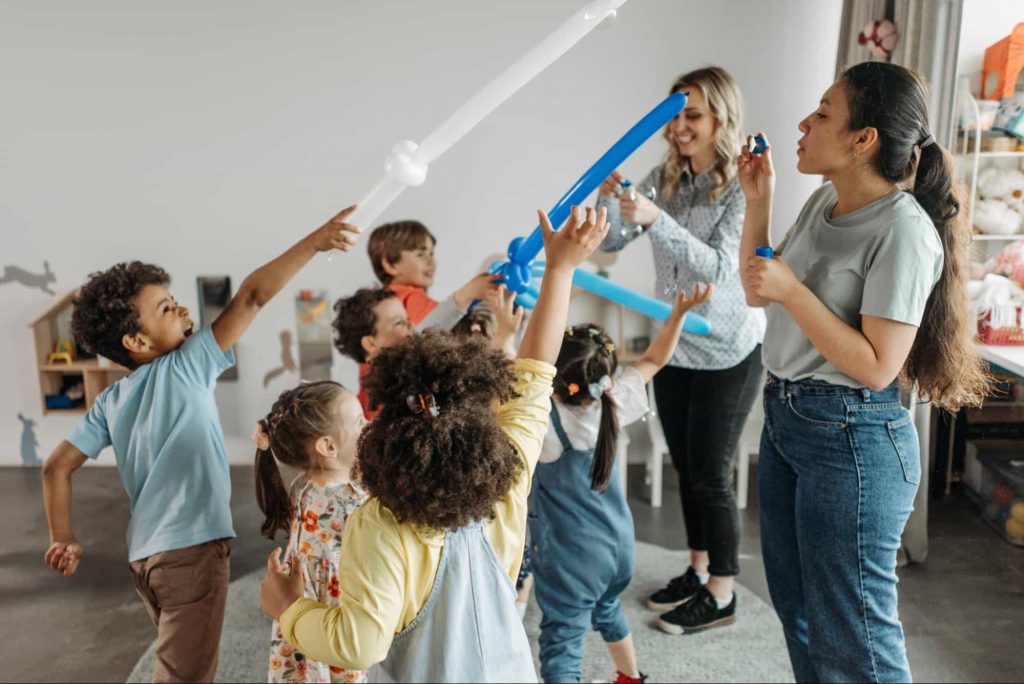Formative assessment is one of the most critical parts of teaching and learning. It helps both teachers and learners to meet the end objectives.
Every teacher uses a different approach to evaluate assessment in the classroom. However, more broadly, two types of assessments are commonly practiced – Formative and Summative Assessments. Formative assessment helps bridge learning gaps and evaluate students’ progress during the learning process, unlike summative assessment.
Math & ELA | PreK To Grade 5
Kids see fun.
You see real learning outcomes.
Watch your kids fall in love with math & reading through our scientifically designed curriculum.
Parents, try for free Teachers, use for free
Thus, modern teachers use formative assessments to create an intellectual learning environment. So, let’s look better at formative assessment before adopting it in your classroom.
What is Formative Assessment?

Formative assessment refers to a set of methods teachers use to monitor the in-process progress of students. Formative evaluation monitors a student’s comprehensive review, including academic, special needs, etc.
Using formative assessments in the classrooms helps teachers to assess the academic growth of a student in different manners, such as:
- Which subjects a student finds hard to learn?
- What are the learning standards of the individual students in the classroom?
- Which skills do they find difficult to acquire?
Once teachers run the assessment, they can adjust the lessons based on individual students’ needs and objectives.
In short, formative assessment is something that teachers ask or do to gather information about a student. For example, asking your students to raise their hands if they have any doubts is also a formative assessment.
Related Reading: How to Set Up an Outdoor Classroom: A Step by Step Guide
Formative Assessment Examples

Without even knowing, you conduct various formative assessments in your classroom. Here are a few common formative assessment examples:
- Asking your students to mention subjects or topics that they find hard to understand.
- Providing a specific worksheet or journal to students for expressing their thoughts.
- Requesting class monitors to evaluate the performance of their in-mates.
- Asking students to self-evaluate their growth and performance, etc.
Formative Assessment Evaluation

Formative assessment is not a new term. It has been part of the teaching methods since 1960. However, this teaching technique has entered the mainstream in recent years.
The digitalization, intention-based studies, and modernization of the educational system have fueled formative assessments. Schools are encouraging more and more teachers to use formative assessment strategies. They motivate teachers to personalize learning to create better learning opportunities for all.
Why Should You Use Formative Assessment Strategies in Your Classroom?

Formative assessment is a debatable topic among educationists. Some find it a loose method to evaluate performance, and some think it is not an effective way to monitor performance. But, no matter what people say, it is undebatable that formative assessment offers the following benefits:
1. Goal-Based Learning
Constant progress monitoring highlights the end learning goals. It helps students remember their goals from a particular course or class. Conversely, teachers can ensure students are moving in the right direction or require extra help to achieve their academic goals.
2. Student-Centered Learning
Through formative assessments, teachers can understand the requirements of individual students. They can know the learning pace and caliber of a student. This helps to promote a student-centered learning environment in the classroom.
3. Improves Education Level
Teachers will know students’ academic growth in real-time when they gather constant feedback via different methods. They can bridge the gap between students’ learning goals and knowledge using this knowledge. Teachers can implement strategies to help slow students, like visual or audio learning.
4. Elevate Students Motivation
When students get regular progress updates and notes on achieving their learning goals, it improves their engagement. Formative assessments keep students motivated and inspired to do better every day.
Related Reading: How to Build Effective Project-Based Learning Plans for Classrooms
5. Personalized Learning
Formative assessment allows teachers to practice personalized learning in the classroom. They can establish one-on-one relationships with every student in their classroom and understand their strengths/shortcomings. This helps teachers to utilize students’ strengths to teach them new concepts.
6. Self-Evaluation
Self-evaluation is the best way to improve students’ performance. In this, students evaluate their own progress over the period and compare it to the standards set by their teachers. This will reduce teachers’ burden to monitor students’ performance and enhance their productivity.
7. Effective Decision Making
When teachers have rigorous data, they can make effective decisions on time. If teachers find a student struggling with a subject, they can use different strategies to teach them. And, if a student is still struggling, they can suggest alternative solutions before it’s too late.
Types of Formative Assessments

Related Reading: What Makes Summative Assessment a Powerful Tool for Teachers
1. Quizzes
Impromptu quizzes are the most preferred way to conduct formative assessments. After teaching a lesson, many teachers ask for quizzes to know how many students have understood the concept.
2. Polls
Polls are helpful to gather instant feedback. During online studies, polls can help teachers better understand the students’ viewpoints on a specific topic.
3. Entry Slips
Teachers can ask questions before starting a new lesson to check how much students already know. This helps teachers assess the teaching level they should use to make students understand a lesson.
4. Exit Slips
Teachers use this formative assessment technique at the end of a lesson. In this approach, students are requested to write down a few points or share opinions on the lesson. This will allow teachers to evaluate how much students have learned and what they missed.
5. Dipsticks
Dipsticks are an easy and quick method to know how much students have understood in the classroom. In this formative assessment strategy, teachers can give a worksheet to students at the end of a day or week. It is like a mini-test to monitor progress.
6. Tag Feedback
It is a peer assessment method where students evaluate each other’s performance. Tag feedback provides in-depth feedback as students can discuss with their peers better than their teachers.
7. Interviews and Group Discussions
You can host a one-on-one interview with your students after a significant period to understand their needs. A 10-minute interaction with your students can help you learn much about them. Besides this, you can organize group discussions to get better insight into your students’ overall development.
Related Reading: Interesting Social-Emotional Learning Activities for Classroom
8. Practical Exercise
Teachers can ask students to use the lesson in the real world. With this exercise, students can learn to implement an academic lesson in an actual situation. Plus, teachers get to know whether students understand the basic concept or not.
9. Surveys
Another formative assessment method is asking students to take a small survey after the class. You can also send an online survey emails to parents. This will expand the scope of your assessment.
How to Deploy Formative Assessment Strategies in Your Classroom?

The success of your formative assessment strategies depends on how you deploy them. So, it is critical to implement formative assessments in the correct order in your class, such as:
1. Define Performance Criteria
Teachers should explain the performance evaluation criteria to students to work on self-improvement. For example, describe the requirements to grade test papers to students. Teachers can also hold class-wide discussions to define the performance criteria.
2. Boost Students’ Self-Evaluation
It would help if you asked students to use the preset criteria to evaluate their own progress. This practice will save time and make students understand their shortcomings. Teachers should ask students to rank their best work to find their strengths.
3. Provide Comprehensive Feedback
The best feedback is corrective and forward-looking. So, don’t only pinpoint problematic areas in your feedback. You should also provide a detailed solution to overcome the problem. In addition, share feedback over feedback to confirm whether students have learned something from previous feedback.
4. Encourage Peer Discussions
Teachers should invite students to discuss the formative learning process together. These discussions help teachers understand students’ concerns on courses and respond to them. Teachers can get insightful information through group discussions to define learning goals.
5. Collect Constant Data
You cannot provide accurate feedback to students based on past information. You need the latest data to help students and design formative assessment strategies. Thus, you should feel free to collect relevant data from students to provide the correct feedback. Teachers should make a constant effort to monitor their students’ performance.
Let’s Adopt Formative Assessments Today!
If you hope to provide your students with a personalized and futuristic learning environment, formative assessment is a way to do it. These assessments will allow you to teach in a better way. You can make every student grow with regular assessments.
So, we have already shared how to deploy a successful formative assessment strategy in your classroom. Let’s take a leap of faith and raise education standards using formative assessments.
With SplashLearn’s assessment-based learning, you can now elevate your students’ learning outcomes & help them become fearless learners!
Frequently Asked Questions (FAQs)
What is the purpose of formative and summative assessment?
Formative assessment monitors students’ ongoing learning progress and provides instant feedback. Summative assessment aims to analyze a student’s learning at the end of a course. Teachers need to focus on both assessments to improve learning levels.
What is a formative assessment in the classroom?
Formative assessment provides evidence to teachers of where students are in their learning programs. So, formative assessment in the classroom means supporting reflective learning. These assessments help teachers make adjustments to the curriculum based on the students’ performance.
Is homework a formative assessment?
Yes, homework is a formative assessment if used in the right way. In formative assessment homework, students get several chances to practice, get feedback and improve. Homework is the best tool to try new skills without any pressure for students.
What is a good formative assessment?
A good formative assessment strategy revolves around asking students to answer questions like “why” and “how.” The high-order questions require in-depth thinking and provide better insight to teachers.
























